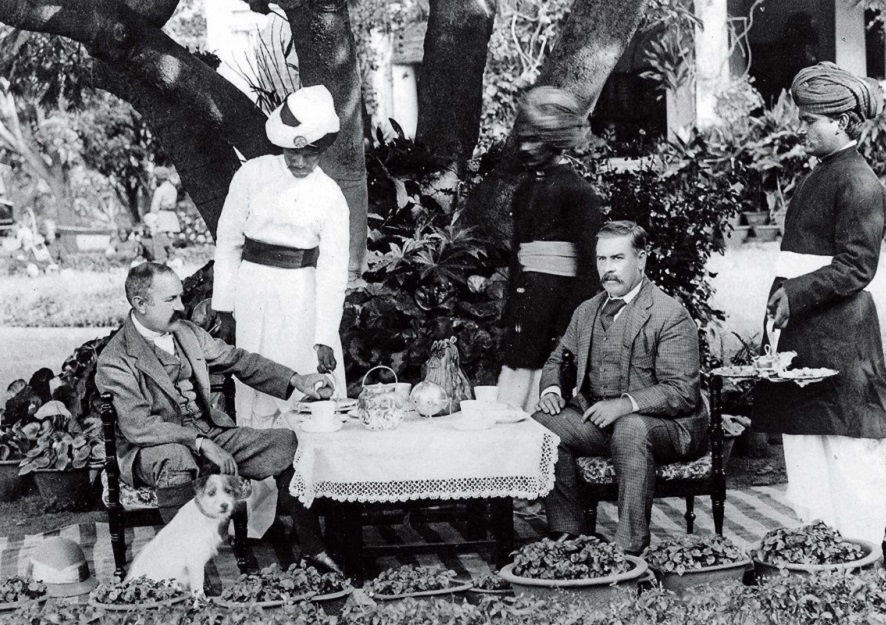How the British successfully colonized the Caribbean by pitching Blacks and Indians against each other

By NII NTREH From face2face Africa
One of the thousand loose threads curiosity urged the world’s media to pull in the aftermath of Donald Trump’s election in 2016 was the role of strategic communications outfit, Cambridge Analytica.
The British firm had overseen the digital campaigns of Trump’s run. But whatever Cambridge did with Facebook especially, was considered everything from machiavellian to illegal.
As further investigations would reveal, attempting to make America great again was far from the only successful adventures Cambridge undertook.
The company was in Trinidad and Tobago earlier in 2010 to help the majority-Indian United National Congress (UNC) political party win the country’s elections against the usual favourite party of Black Trinidadians, the People’s National Movement (PNM).
Anyone taken by the miasma of Cambridge’s work would be forgiven for missing the point that in Trinidad and Tobago and other countries in that part of the world, political associations could literally be split along racial lines.
Race relations in the Caribbean was shaped centuries ago due to the colonial ambitions of the British. Take Guyana for instance.
The popular term, dougla, is an Indian slur that translates into bastard, half-caste or mulatto. It is the name Guyanese of Indian heritage, call offsprings of Black and Indian relationships.
The word’s origin, Bhojpuri, is the Hindi dialect the majority of Indian emigrants from the 19th and 20th centuries spoke.
The Indians had gone to the Caribbean islands on the word of the British colonizers who promised economic salvations for the thousands of poor Indian men and women.
Committing Indians into indentured service after the business of transporting African slaves to the New World, was a very successful commercial option for the British in their colonies.
In Africa, the Indians were taken to Uganda, Kenya, Mauritius, South Africa among others. In the Caribbean, they were taken to Guyana, Trinidad and Tobago and Jamaica.
The Indians complemented the labors of the descendants of African slaves. Above them, British interests superseded while the colonizers designed a social fabric that essentially played into divisions among the laboring class.
Writing for the Pulitzer Center, Gaiutra Bahadur noted that tensions existed between the Indians and the Blacks.
“Despite the shortage of Indian women in indentured societies, very few relationships developed between Indian men and black women. Mutual distrust began with the first encounter, on boats from India where West Indian Blacks were seamen and Indians the human cargo. Indian women were sexually exploited by seamen of all races, but the crew were typically Black or white.”
The enmity persisted on the islands too, ably fomented by the British. The colonizers kept the two peoples apart by keeping them residents of separate areas.
Perhaps, this was because violent confrontations would not serve the colonial economic purpose. But it also meant that any chance for the two groups to live and learn from each other was severed.
After slavery, Black people were elevated to positions of supervisors – basically, they were the brawn that drove the Indians to work in the various industries.
Blacks were also the policemen who whipped Indians into obeisance, breaking up strikes and other protests. In the collective psychology of the Indians, the enemy was unambiguous.
To the Africans, Indians represented the people who had come to take their [African] jobs and worse, undercut the leverage to bargain for more.
Apart from the machinations of the British, cultural differences such as food, language and religion, separated Africans from Indians. And this was worsened since they were not allowed to live together.
Intermarriages were not legally prohibited but they were also highly uncommon.
What all of this means almost 200 years later is that two kinds of Guyanese and Trinibagonians, for instance, exist. Neither country has been independent for even 60 years.
For more on this story go to: https://face2faceafrica.com/article/how-the-british-successfully-colonized-the-caribbean-by-pitching-blacks-and-indians-against-each-other





